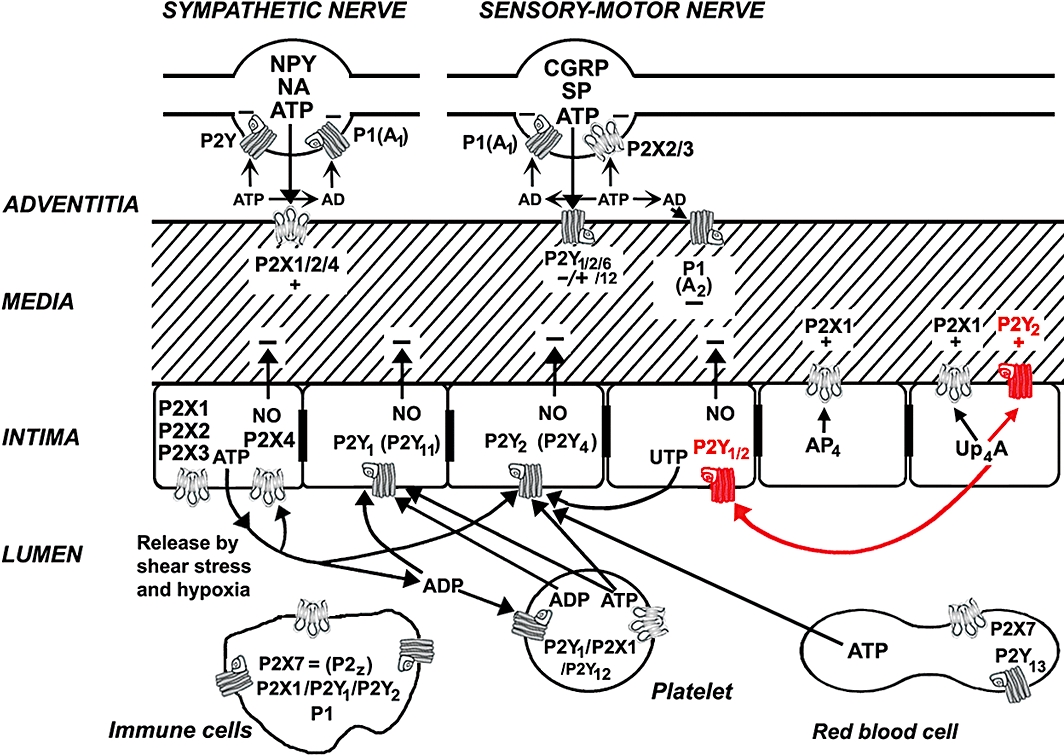Figure 1.

Schematic diagram illustrating the main receptor subtypes for purines and pyrimidines present in blood vessels involved in control of vascular tone. ATP is released as a cotransmitter with noradrenaline (NA) and neuropeptide Y (NPY) from sympathetic nerves in the adventitia to act at smooth muscle P2X1 receptors and, in some vessels, P2X2, P2X4 and P2Y1, P2Y2 and P2Y6 receptors, resulting in vasoconstriction (and rarely vasodilation); ATP is released with calcitonin gene-related peptide (CGRP) and substance P (SP) from sensory-motor nerves during ‘axon reflex’ activity to act on smooth muscle P2Y receptors, resulting in either vasodilatation or vasoconstriction. P1 (A1) receptors on nerve terminals of sympathetic and sensory nerves mediate adenosine (arising from ecto-enzymatic breakdown of ATP) modulation of transmitter release. P2X2/3 receptors are present on a subpopulation of sensory nerve terminals. P1 (A2) receptors on vascular smooth muscle mediate vasodilatation. Endothelial cells release ATP and UTP during shear stress and hypoxia to act on P2Y1, P2Y2 and sometimes P2Y4, P2Y11, P2X1, P2X2, P2X3 and P2X4 receptors, leading to the production of nitric oxide (NO) and subsequent vasodilatation. Adenosine tetraphosphate (AP4) activates P2X1 receptors to excite smooth muscle. ATP, after its release from aggregating platelets, also acts, together with its breakdown product ADP, on these endothelial receptors. Blood-borne platelets possess P2Y1 and P2Y12 ADP-selective receptors as well as P2X1 receptors. Immune cells of various kinds possess P2X7 as well as P1, P2X1, P2Y1 and P2Y2 receptors. ATP released from red blood cells, which express P2X7 and P2Y13 receptors, is also involved in some circumstances. The additional involvements of uridine adenosine tetraphosphate (Up4A) described in the paper by Tölle et al. 2010 are indicated in red. (This figure is modified from Burnstock G (1996). J Auton Pharmacol16: 295–302 with permission from Blackwell Science Ltd, UK.)
